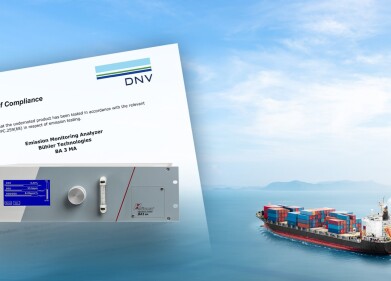Measurement and testing
3 Methods Used to Test Lithium Ion Batteries
Oct 02 2022
The energy landscape is rapidly evolving, and lithium ion batteries are at the heart of the movement. From smartphones and tablets to electric vehicles (EV) and scooters, advances in lithium ion technology have made batteries more powerful, durable and versatile than ever.
Analytical testing has an important role to play in research and development. Scientists and engineers rely on testing to address issues like self-discharge and loss of energy density. Testing is also integral to the strict health, safety and quality assurance regulations battery manufacturers must comply with.
Below, we take a closer look at some of the analytical testing methods used in the lithium ion battery industry.
Characterising chemical bonds with Fourier Transform Infrared (FT-IR) Spectroscopy
This characterisation technique offers valuable insight into the unique chemical bonds of lithium. Information is used to understand more about issues such as oxidative degradation, which can affect battery power and performance.
Compositional testing with Gas Chromatography Mass Spectrometry (GC/MS)
Fast and precise, this combination of analytical techniques is useful for compositional testing of electrolytic solutions. It’s sensitive enough to offer ultra-trace detection limits, which allows scientists to detect even the smallest concentrations of cyclic carbonates in electrolytic solutions. This is important, as ratios of cyclic carbonates such as ethyl methyl carbonate and ethylene carbonate can have a big impact on battery properties like energy density and stability.
GC/MS is also used to analyse gasses generated by lithium ion batteries. Data can reveal degradation patterns in components, usually triggered by recurrent charging and discharging. Next-generation technologies like the Clarus SQ 8 GC/MS system from PerkinElmer allow users to customise options like dynamic range and sensitivity for optimal results.
It’s these kinds of advances that help engineers develop lithium ion batteries powerful enough to turn the wheels of a Tesla. Over the coming decade, EV technology will play a pivotal role in minimising greenhouse gas emissions and addressing the air pollution crisis. Technologies like H2S splitting to create hydrogen from sour gas will also step up. As the world continues to embrace hydrogen as an alternative energy source, experts predict demand for H2S splitting infrastructure will spike.
Thermal analysis with Differential Scanning Calorimetry (DSC)
Thermal analysis techniques like DSC are useful when addressing issues like performance degradation. These types of issues are often caused by issues with the separator. DSC is used to analyse a variety of separator properties, including melting profile.
Lithium ion battery testing is a complex field that relies on a myriad of different methods, techniques and technologies. Find out more about the highly specialised science in ‘Lithium Ion Batteries: Types, Testing & Uses’
Digital Edition
PIN 26.1 Feb/Mar 2025
March 2025
Analytical Instrumentation - Elemental Analysis for Quality and Process Control at Refineries, for Lubricants and Wear Metals in Engine Oils - Synthetic Lubricants: New Developments - Scaling...
View all digital editions
Events
Apr 14 2025 Moscow, Russia
Apr 15 2025 Moscow, Russia
Apr 22 2025 Hammamet, Tunisia
Apr 22 2025 Kintex, South Korea
Solar & Energy Storage Summit 2025
Apr 23 2025 Denver, CO, USA



















